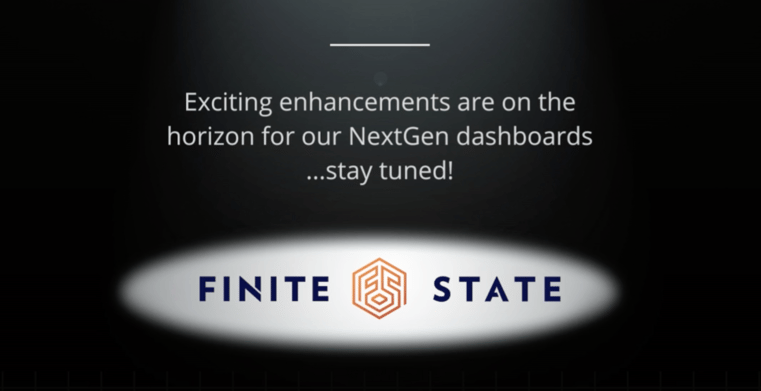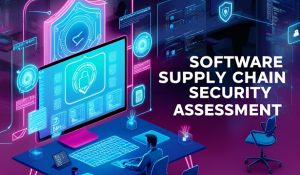Open source software (OSS) has revolutionized the software development lifestyle, but at what cost to software supply chain security?
Organizations, large and small, reach for OSS due to its flexibility, cost-effectiveness, and the collaborative spirit it promotes. But, as with any powerful tool, OSS comes with its challenges, especially when it's introduced into the software supply chain of a connected device.
Open-Source Software: The Benefits
Healthcare
In the realm of healthcare, the utilization of OSS has been transformative. Electronic Health Records (EHRs), for instance, leverage open source platforms to ensure interoperability and data exchange among healthcare providers. Such platforms promote standardized data formats, allowing patient information to be seamlessly shared across different healthcare settings. OpenMRS, an open-source platform, has been influential in developing countries for its customizable medical record systems. Additionally, medical imaging software and health information exchanges are increasingly integrating OSS. However, this surge in OSS usage in healthcare brings about concerns about data privacy and security, especially with strict regulations like HIPAA in place.
Industrial Control Systems (ICS)
ICS forms the backbone of industrial automation, playing a critical role in sectors like energy, utilities, and manufacturing. Open source software in ICS helps operators monitor and control physical processes, ensuring system reliability and efficiency. Projects like OpenPLC have given developers a platform to write control algorithms in standardized languages, simplifying the process of deploying them across various ICS hardware. OSS also offers flexibility and adaptability, allowing industries to customize solutions tailored to their unique operational needs. However, the integration of OSS within ICS environments also poses risks, as vulnerabilities can be exploited to disrupt critical infrastructures.
Connected Auto
The connected auto sector stands at the crossroads of innovation, where vehicles are not just modes of transport but hubs of digital interaction. OSS plays an instrumental role in this transformation. Linux-based automotive grade platforms, such as the Automotive Grade Linux (AGL), are being embraced for infotainment, navigation, and more. Open source components fuel advancements in vehicle-to-vehicle (V2V) and vehicle-to-infrastructure (V2I) communication, promoting safer and more efficient road systems. But with the benefits comes the challenge of ensuring vehicle cybersecurity. As cars become more connected, they also become potential targets, making the security of OSS components in these vehicles paramount.
Open Source Software: A Double-Edged Sword
The licenses that govern OSS determine the terms of its use, modification, and distribution. While this encourages innovation, it's easy to overlook the subtle stipulations within these licenses. The repercussions for non-compliance can surge beyond legal concerns, indeed, they can touch every facet of your business:
Non-Compliance Fines
Ignoring the nuances of OSS licenses can lead to heavy fines. Financial burdens aside, these fines can shift resources away from crucial business operations.
Reputation Damage
In an age where everyone strives for transparency, a license violation won't remain a secret for long. Such slip-ups can erode trust, especially in the developer community that values OSS ethos.
Code Contamination
Incorporating OSS into proprietary projects without due diligence can inadvertently bind the entire project to open source licensing terms—a nightmare for proprietary solutions.
Litigation Risks
Many open source communities vigilantly protect their intellectual property. Overlooking license terms can trigger lawsuits, consuming time, money, and energy.
Finite State NextGen Platform: A Beacon Amidst Complexities
Understanding and navigating the intricacies of OSS licenses requires more than manual oversight. This is where Finite State's NextGen platform shines:
License Tracking & Management: Finite State's new License feature simplifies the task. Whether it's Binary Analysis or SBOM ingestion, the platform enriches data with vital license information. This not only provides clarity but ensures compliance.
Intuitive Dashboards: With vast amounts of data at play, clear, concise visualization is crucial. Finite State's dashboards offer a snapshot of artifact risks, enabling users to pinpoint vulnerabilities and adjust strategies swiftly.
In-depth Risk Analysis: Dive deeper with detailed risk profiles. Whether it's understanding code defects, configuration issues, or other concerns, the platform ensures you have the complete picture.
Real-time Intelligence: Staying updated with the latest vulnerabilities and potential exploits ensures that teams are not just reactive but proactive in their approach.
Conclusion: A Future-Proof Strategy
Open Source Software will undeniably play a major role in the continuing evolution of software supply chains. But as its influence grows, so too does its complexity.
Organizations need more than just awareness; they need tools designed for this new reality. Finite State’s NextGen platform stands ready to support software supply chains ready to harness the power of OSS without compromise, ensuring a security, compliance, and efficiency.
Subscribe to Our Blog
Get the latest posts delivered straight to your inbox weekly.
Share this
You May Also Like
These Related Stories

Navigating Open Source Compliance Rules & Component License Risks

Software Supply Chain Security: Measuring Program Success Rates


